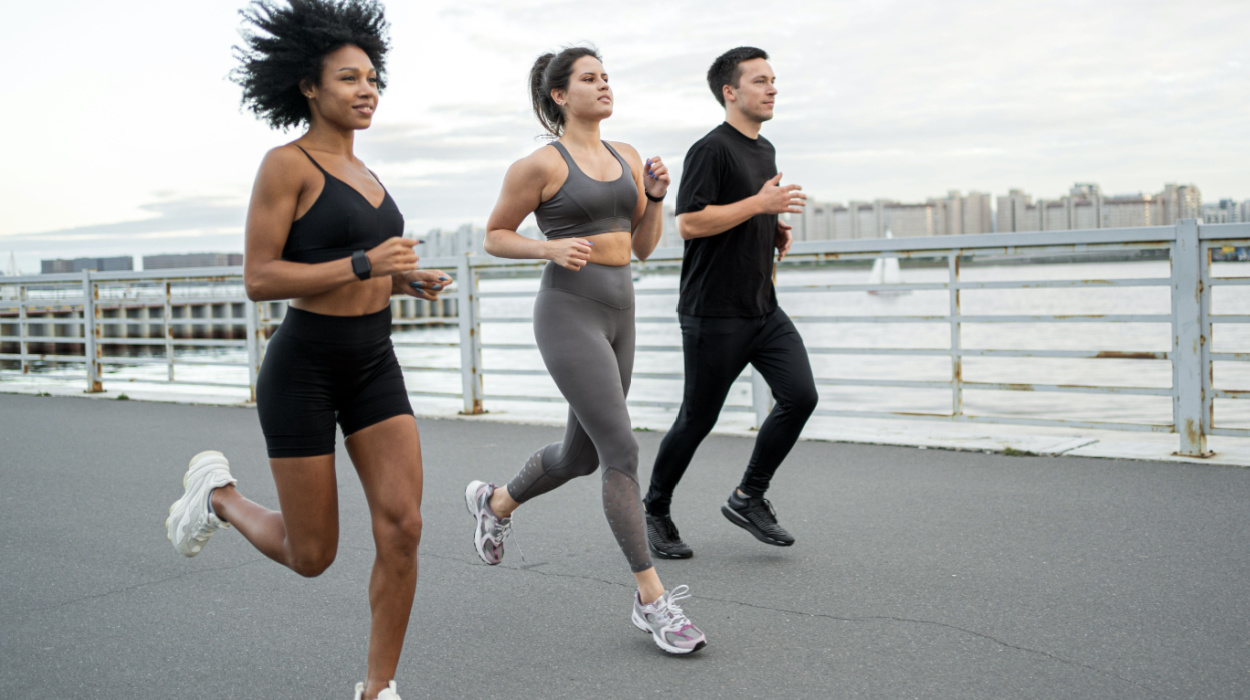As you work toward your weight loss goals and experience progress and setbacks, it can feel as though your body is working against you at times. To lose weight, your body ultimately has to rise to the occasion and take advantage of the nutrients you provide.
Metabolism defines the way your body processes energy. Even your resting metabolic rate will burn calories. For example, you burn calories when you sleep. Core temperature has become a part of the conversation because a healthy metabolism is integral to maintaining body temperature.
This leads to the question of whether obesity and weight changes are associated with changes in body temperature. It also may lead you to wonder how to raise your core body temperature for weight loss.
Four Ways To Increase Thermogenesis For Weight Loss
Metabolism and core body temperature are closely related. When you are interested in losing weight, some strategies can help you explore this connection:
- Temperature exposure.
- Dietary considerations.
- Exercise.
- Thermogenic supplements.
Ultimately, supporting a healthy metabolism will help you lose weight.
How To Raise Your Core Body Temperature For Weight Loss
The connection between body temperature and weight loss is rooted in the idea that boosting your metabolism will generate heat and help you burn more calories. Since fat burning is an important goal during this process, it can be helpful to differentiate between the two basic kinds of fat or adipose tissue.[1]
- Brown adipose tissue: A primary function of brown fat cells is facilitating the chemical reactions that help regulate the body’s temperature. This tissue can use lipids and excess calories to keep the body warm, expending energy for heat production.
- White adipose tissue: White fat cells are generally less desirable than brown adipose tissue as they may grow to form excess fat. They provide heat insulation, physical cushion, and a storage depot for energy stored as lipids. Fat loss efforts are generally geared toward white adipose tissue.
Dietary choices, supplements, exercise, and other methods like cold exposure are all different mechanisms to stimulate changes in metabolism. Some methods tend to focus more closely on the activity of one type of fat tissue over the other.
Temperature Exposure

Your metabolism is important for your body’s ability to adjust to its environment. Exposure to either end of the temperature spectrum can be used. The idea is to focus on the energy required to move toward a standard human body core temperature of about 98.6 degrees Fahrenheit.
- Cold exposure: Methods like ice baths are used to activate the body’s metabolism as your body uses brown adipose tissue. The effects of cold exposure[2] for weight loss specifically are controversial, but it may have some promising benefits for mental health and the prevention of cardiovascular disease.
- Sauna: Bathing in a sauna will increase your core temperature. As you sweat and lose water, it’s very important to stay hydrated. Lower cardiovascular risk[3] has been linked more strongly to sauna sessions, but some studies do show some reductions in body weight.
Diet
Creating a caloric deficit is essential when your ultimate goal is getting rid of excess fat like white adipose tissue and losing weight. This is accomplished by eating fewer calories than you burn while ensuring you are providing your body with important nutrients. Certain foods can make this easier to accomplish and may have some thermogenic properties themselves.
Some helpful dietary changes include:
- Limiting processed foods: These are high in sugar and saturated fats, making it difficult to maintain blood sugar stability and avoid weight gain.
- Choosing complex carbohydrates: Whole grains are more nutritious without adding many empty calories. They also tend to provide dietary fiber, which can help stabilize blood sugar metabolism.[4]
- Eating more lean protein: Rich protein sources like salmon or chicken can provide energy while limiting any associated unhealthy fats.
- Drinking thermogenic beverages: Coffee and green tea can boost metabolism because of their caffeine content.
- Adding more spice: The capsaicin[5] in spicy foods like chilis, cayenne, or jalapenos is associated with enhanced metabolism.
Exercise
As you get your body moving, you increase your body temperature and kickstart your metabolism. Cardiovascular training[6] and high-intensity interval training are both great ways to reduce body fat and burn calories.
Weight training and exercises focusing on core strength and flexibility are also beneficial. When you break a sweat, your body temperature rises as your body burns calories to produce heat.
Thermogenic Supplements

Many diet pills or fat burners are considered thermogenic. This term can be broken down into ‘thermo’ or heat, and ‘-genic’ or “to produce”. Basically, thermogenics are meant to produce heat by boosting your body’s metabolism.
Here are several common ingredients used in thermogenic supplements:
- Caffeine: The effects of caffeine on weight loss are often studied more specifically as a pre-workout supplement. There is some evidence that caffeine improves fat oxidation rates[7] during exercise, but there is some variability. It appears the average person would need a dose of at least 3.0 mg/kg, or 1.36 mg per pound, to produce a significant change in fat metabolism.[7]
- Green tea extract: Supplements containing green tea often list it with its primary catechin, EGCG. Green tea is also a natural source of caffeine. When combined with exercise, a green tea supplement[8] has been associated with a greater BMI and body fat percentage reduction than exercise alone.
- Garcinia cambogia: The effects of garcinia cambogia[9] on weight loss are mixed, and many studies show no benefit compared with placebo. While some studies show a modest benefit, talking with your doctor about weighing the potential risks and benefits is important.
- Capsaicin: Supplements containing capsaicin have been associated with both appetite suppression and higher rates of fat metabolism. A recent review of multiple studies suggests capsaicin[10] is associated with weight loss. The effects are modest, highlighting the importance of diet and exercise for significant results.
Why Do You Need To Track Body Temperature?
It should be noted first and foremost that body temperature in and of itself isn’t necessarily going to predict changes in body weight. Simply seeking a higher temperature has the potential to miss the point.
For instance, individuals considered obese have higher body temperatures,[11] perhaps partially because body fat provides insulation. The body may not have to burn as much energy simply to maintain warmth under normal circumstances.
For weight loss, tracking your body temperature may be most useful when combined with tracking calories in your diet, physical activity, weight, or body fat percentage over time. Keeping tabs on your progress can be fun and keep you motivated. After all, those who monitor their weight[12] are more likely to lose weight.
Conclusion
Core body temperature is tied to metabolism, and metabolism is tied to weight changes. Because of this relationship, body temperature may become a logical focus.
When losing weight, the most effective methods will be associated with supporting a healthy metabolism. Even when considering a metabolism-boosting supplement or exposure to heat or cold, eating a healthy, balanced diet and staying physically active are crucial.
If you have concerns specifically about your body temperature, heat or cold sensitivity, or other changes, it is best to consult your doctor first.
Frequently Asked Questions
Yes, your body needs to expend energy to maintain a stable temperature. The higher the core body temperature, the more energy is needed to maintain this temperature, and thus more fat is burned to meet this energy demand.
During exercise, your body temperature can rise several degrees temporarily. You may see temperatures as high as 103 or 104 degrees Fahrenheit during this time. The temperature itself isn’t necessarily predictive of weight loss.
The temperature that is most comfortable for you to improve your sleep quality. For instance, many prefer a relatively cool room as your body temperature typically drops slightly between when you are awake and asleep.
Your body does need to account for the colder temperature of the water, but the energy needed to do this is relatively small. The comparative benefits of staying hydrated while avoiding sugary sodas or other beverages are likely greater.
 Evidence Based
Evidence Based
